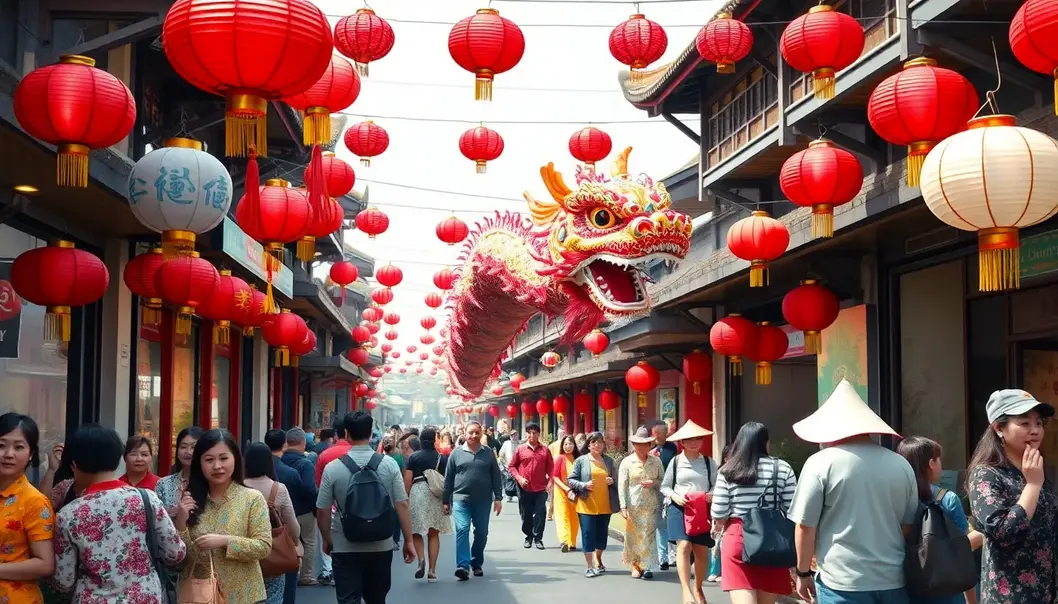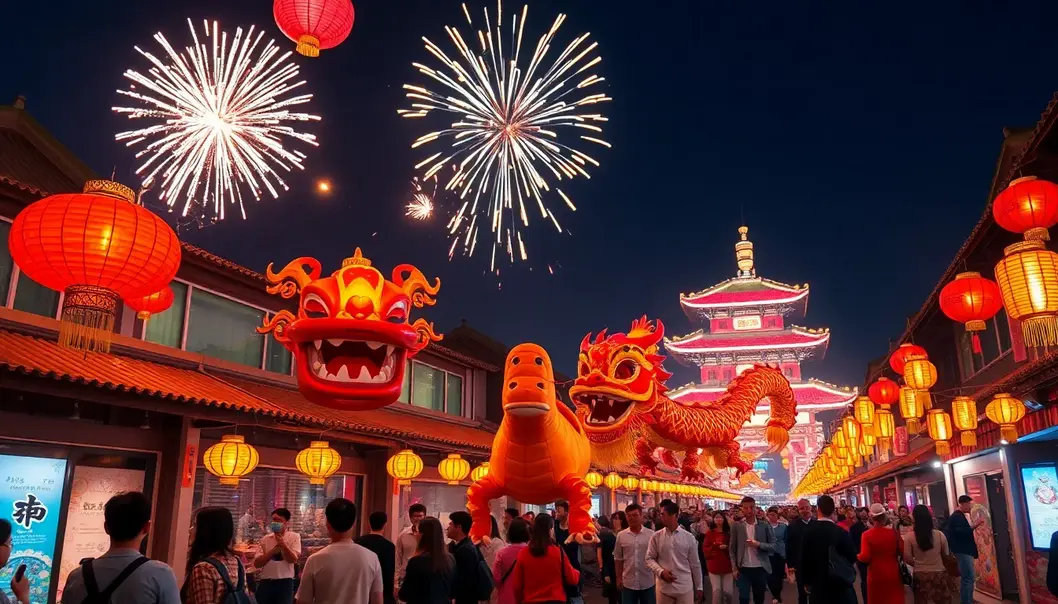Lunar New Year, often synonymous with the Chinese New Year, is a cultural festival celebrated across multiple Asian countries, each with unique traditions that date back thousands of years. This vibrant holiday marks the arrival of spring based on the lunar calendar, signifying fresh beginnings and the promise of prosperity. Despite its ancient roots, the Lunar New Year remains a vital celebration for Asian communities globally. From family reunions, intricate customs, to colorful parades, this festival is a testament to the enduring legacy of cultural heritage. Understanding its profound meaning and rich history not only deepens appreciation but also enriches the cultural tapestry shared across communities.
Ancient Origins and Evolution

The Lunar New Year, also known as the Spring Festival in many Asian cultures, traces its roots back to ancient agrarian civilizations. Its beginnings are deeply intertwined with the agricultural cycle, reflecting the rhythms of planting, harvesting, and renewal. In ancient China, the festival was celebrated as early as 3,500 years ago during the Shang Dynasty. These early celebrations marked the end of winter and the start of spring—a time for people to leave behind the old and usher in new beginnings.
The connection to agriculture is evident in the festival’s traditions. Farmers relied heavily on a lunar calendar to guide their crop cycles, aligning the New Year festivities with the second new moon after the winter solstice. This was a period to honor deities and ancestors, securing their blessings for a prosperous year ahead. Over time, the celebration evolved, incorporating various myths and cultural influences. One of the most enduring tales is that of Nian, a mythical beast said to terrorize villages. According to legend, the loud noises and bright lights of firecrackers and lanterns were effective in scaring Nian away, giving rise to these enduring traditions.
Throughout the centuries, as China’s influence spread across Asia, the Lunar New Year tradition traveled with merchants and immigrants, evolving into distinct regional variations. Countries like Vietnam, Korea, and Singapore integrated their local customs and beliefs, enriching the festival’s tapestry. For example, in Vietnam, Tet Nguyen Dan maintains a focus on family reunions and ancestor worship, while Koreans celebrate Seollal with rituals like charye, a ceremony to honor ancestors with offerings of food.
The evolution of the Lunar New Year is a testament to its resilience and adaptability. Despite various historical disruptions—like wars and changing political regimes—it has retained its significance. During periods of colonization and the imposition of Western calendars, the festival remained a poignant symbol of cultural identity and continuity. Its celebration today, from family gatherings to public parades and fireworks, reflects a blend of ancient traditions and modern interpretations, drawing millions of people together in a shared cultural heritage.
As we prepare to explore the diverse cultural practices surrounding the Lunar New Year, one can see how this festival encapsulates a journey through time—a living history of people united by shared values of family, renewal, and community. Looking at the latest trends, such as the fashion scene where traditional red garments dominate during the celebrations, it is interesting to note their growing influence in mainstream fashion as highlighted in discussions on hot color trends. The festival continues to inspire and captivate, reminding us of the enduring power of ancient traditions in the fabric of modern life.
Cultural Significance and Traditions

The Lunar New Year, celebrated across Asia and beyond, is a tapestry of cultural significance woven with rich traditions and symbolism. This festival, marking the turn of the lunar calendar, is not only a celebration of new beginnings but also a deeply rooted cultural ritual that varies remarkably between different countries.
In China, the Lunar New Year, also known as Spring Festival, is the epitome of family gatherings and cultural practices. The vibrant display of red—symbolic of good fortune and happiness—dominates festivities. Homes are decorated with red lanterns, couplets, and paper cuttings. The clamor of fireworks, believed to ward off evil spirits, punctuates the celebrations, ensuring a joyful start to the coming year. A pivotal part of the Chinese tradition is the annual reunion dinner, where families gather for a lavish meal, centralizing around the idea of unity and prosperity.
In contrast, Vietnam’s Tết Nguyên Đán, or simply Tết, revolves around paying homage to one’s ancestors. It’s a blend of solemn reverence and spirited celebration. Preparations begin well ahead of the Tết holidays, as families spring-clean their homes and prepare feasts. Offerings are made at family altars, and elders grant new year’s blessings to the younger generations. The symbolic peach blossom and kumquat trees are prominent, reflecting hope and wealth in the coming year.
Korea’s Seollal is a time to pay respect to ancestors while embracing the bustling future ahead. Families dressed in traditional hanbok perform ancestral rites known as Charye, which involve preparing food offerings early in the morning. This reverent tradition reinforces faith in familial bonds and gratitude towards forebears. Additionally, games like Yunnori and friendly wagers add an element of fun, emphasizing good luck and fortune.
In parts of the world where the Lunar New Year is not a public holiday, communities still uphold traditional customs with fervent passion. Lion dances and street parades attract locals and tourists alike, who immerse themselves in the rich cultural expressions. Additionally, from New York’s Chinatown to London’s West End, these festivities encapsulate the multicultural embrace of this festival, ensuring cultural appreciation and continuity.
A common thread among these diverse traditions is the shared emphasis on family, gratitude, and renewal. Amidst the vibrant tapestry of customs lies the universal longing for a prosperous new year, where everyone hopes for positivity and growth. As the world becomes more interconnected, the Lunar New Year’s influence continues to expand, appealing to people from all walks of life, helping them embrace timeless values in modern society. Learn more about the cultural implications of color trends during this festive period in this article on hot color trends of 2024.
Final words
The Lunar New Year is more than just a festival; it’s a profound cultural celebration that brings together communities, embracing both historical significance and cultural diversity. Its ancient roots and continuing traditions form a bridge between past and present, reminding us of the shared humanity and timeless values. As busy professionals, understanding and appreciating such global traditions can enhance cultural competence and foster deeper international connections.
Embrace cultural richness and diversity by incorporating global celebrations like the Lunar New Year into your personal and professional life. Explore our resources to learn more.
Learn more: https://www.culturalinsights.com/lunar-new-year
About us
Cultural Insights offers comprehensive resources and guides for companies and individuals looking to enhance their cultural knowledge and appreciation, helping to foster more inclusive workplaces and communities by promoting understanding of global traditions.

